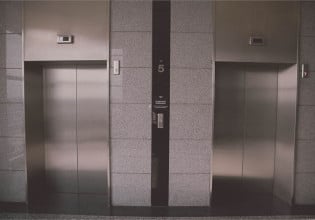Buried Treasure? California’s Key to Power Line Protection and Wildfire Prevention
The California Public Utilities Commission has launched a program to streamline the approval process for utilities’ undergrounding plans.
In California, the most destructive wildfires are attributed to power lines and utility infrastructure. While power lines and equipment cause only about 10% of fires, they account for nearly half of the damage, according to the California Public Utilities Commission (CPUC).
Utility companies already employ fire mitigation maintenance, including clearing vegetation around infrastructure and using smart grid monitoring to detect faults and vulnerabilities. However, the CPUC says they can reduce fire risk even more by moving power lines underground. The CPUC and utilities such as Pacific Gas & Electric (PG&E) estimate undergrounding can further reduce utility-caused fire risk by 98%.
California wildfire. Image used courtesy of Wikimedia Commons
To expedite the process, the CPUC’s Infrastructure Undergrounding Program provides a structured approval process for undergrounding and system hardening.
The project could cost anywhere from $1.85 to $6.1 million per mile, but the CPUC claims it could keep total costs down and protect customer rates.
Undergrounding Process
Moving power lines underground requires more steps, more materials, and hardier equipment than installing overhead lines. Costs can involve the following:
- Civil engineering and land use. Since undergrounding involves more extensive digging and construction than utility poles, it requires more intense engineering, surveys, and permits.
- Construction equipment. Multiple machines may be used to trench, dig, plow, drill, bore, and perform other specialized tasks.
- Materials cost. Underground power cables are larger and more complex than overhead lines and cost five to 10 times more. Each cable must be encased in steel conduit, and the undergrounding trench also requires concrete and other filling materials.
Undergrounding power lines begins with identifying the lines and equipment at highest risk of falling or failing. Increasingly, utility companies are using artificial intelligence and other smart grid technologies to locate these areas.
Engineers must consider the land’s geology, local land use regulations, and environmental impacts and obtain necessary permits. An archaeological survey may be necessary.
Trench undergrounding. Image used courtesy of CPUC
Trench undergrounding is commonly used to bury cables. This method involves digging trenches to lay conduits to encase and insulate the power lines. Overhead cables are cooled naturally by the surrounding air, but the copper and aluminum components in underground cables retain heat and require heat dissipation measures.
Underground cables are usually much thicker than overhead lines to reduce electrical resistance and heat. They may be insulated with aluminum or lead.
Several cables can be buried together, but they must be spaced apart. In some instances, forced air or water cooling may be required. Some cable types are surrounded by pressurized fluid. However, the XLPE (cross-linked polyethylene extruded) cable contains no fluid and requires less maintenance.
The trenches may be covered with concrete, but adequate access must be provided for maintenance work.
Another undergrounding method is directional boring, which uses drilling equipment to make boreholes. The power lines are pulled through the boreholes. Since boring doesn’t disturb the land surface, it may be used to avoid damaging building or road infrastructure.
The costs add up. In 2021, PG&E started a plan to underground 10,000 miles of power lines. So far, it has completed 600 miles, averaging about 20 miles per week.
Costs have ranged from $3 million to $4 million per mile, depending on the terrain. The CPUC approved a rate hike for PG&E customers, who experienced an average $34 monthly increase in their electric bills.
However, the CPUC and utilities believe the initial cost of undergrounding will offset the future costs of maintenance and wildfires.
Fire Mitigation
Last year, 7,127 wildfires burned more than 324,917 acres in the state. PG&E claims its undergrounding and system hardening plan will reduce wildfires and power outages by protecting lines from storms, high winds, and lightning. Lightning and human activity cause most wildfires in California.
Video used courtesy of PG&E
PG&E is supplementing its undergrounding program with other hardening measures, such as installing more resilient utility poles and covering overhead lines. It also uses remote cameras and other monitoring equipment to detect problems.’
The CPUC’s Undergrounding Plan
The CPUC’s program will apply to California investor-owned utilities with more than 250,000 customers, including PG&E, San Diego Gas & Electric, and California Edison.
Utilities must submit a 10-year undergrounding plan to the CPUC and the Office of Energy Infrastructure. The proposal must detail how the utility will prioritize the undergrounding based on benefits, public safety, and risk reduction. The utility must review other possible fire mitigation methods and analyze the cost-benefit threshold.
Approval could take as long as 18 months. Utilities first submit their proposals to the Office of Energy Infrastructure Safety (Energy Safety), which has nine months to review them. If Energy Safety approves proposals, they’re forwarded to CPUC, which has nine months to deny or approve the plans.
The utility’s proposal must meet cost cap conditions and other financial restraints. To lessen the impact on ratepayers, the utilities must also apply for funds through federal, state, and other sources. Once utilities begin undergrounding, their processes will be subject to oversight and periodic audits.








